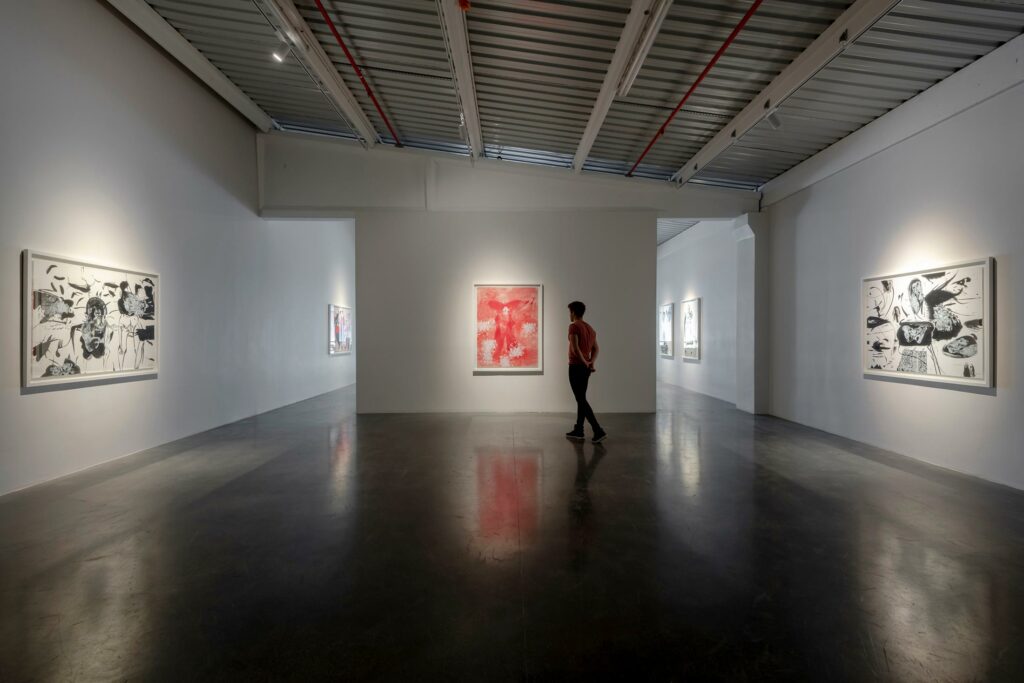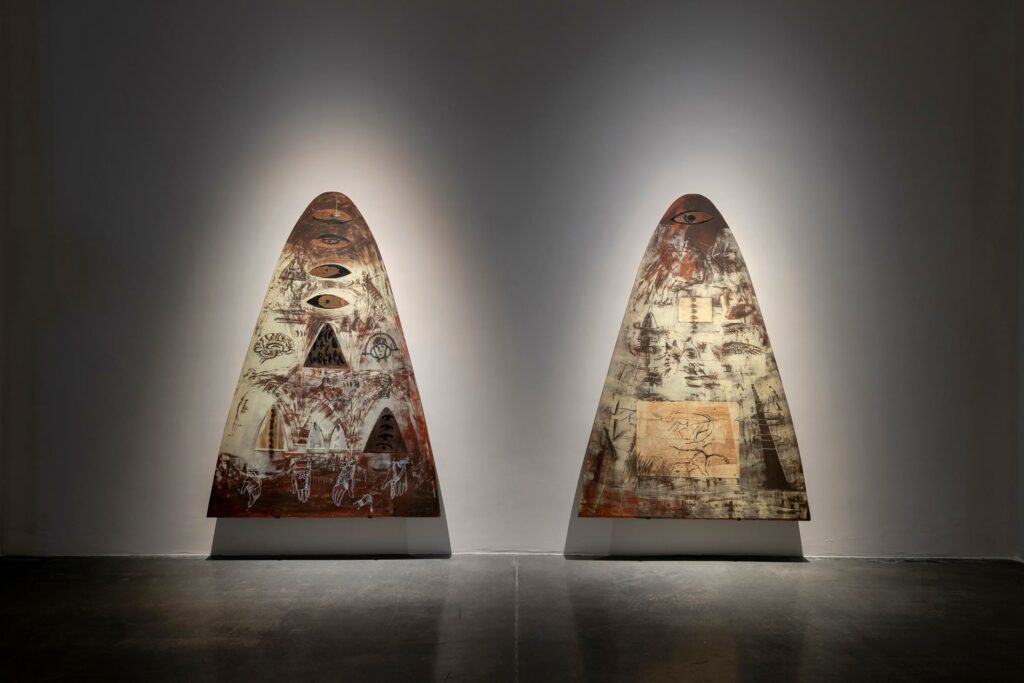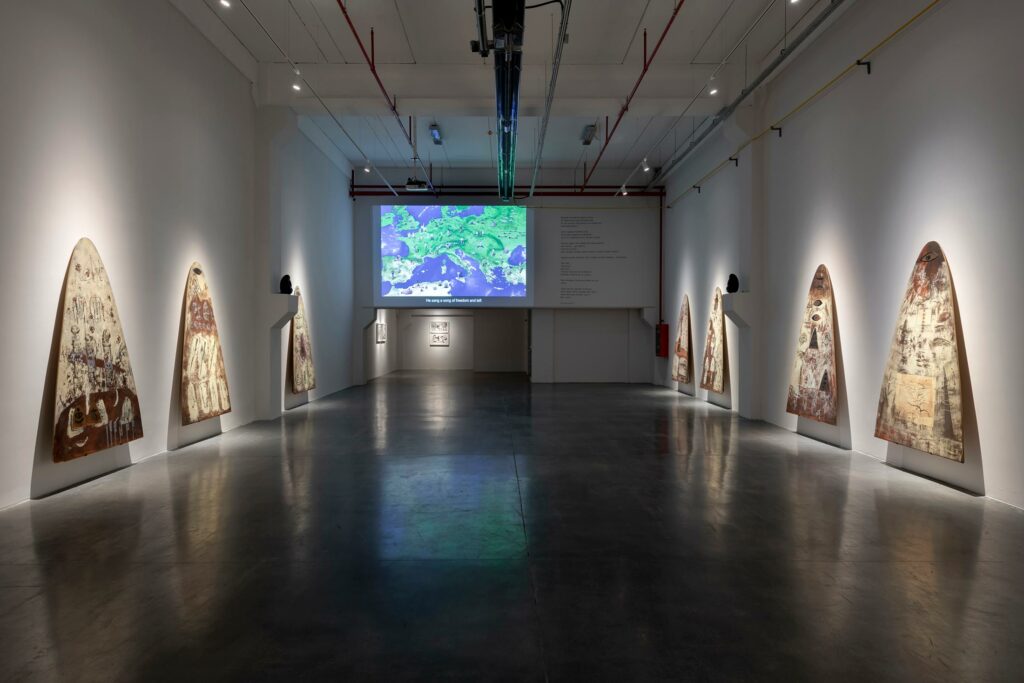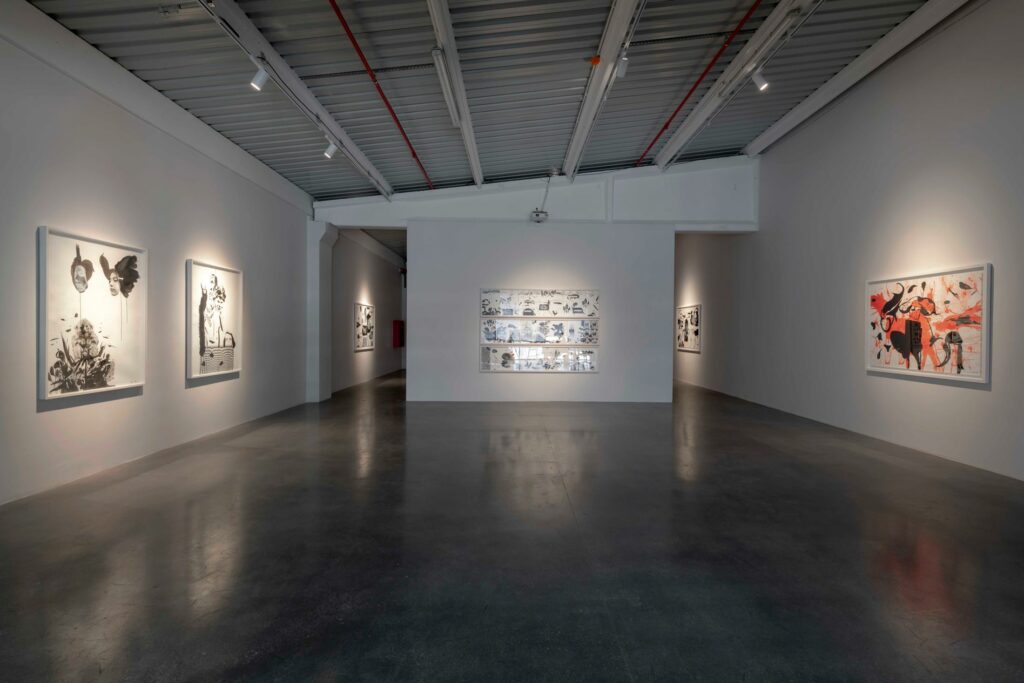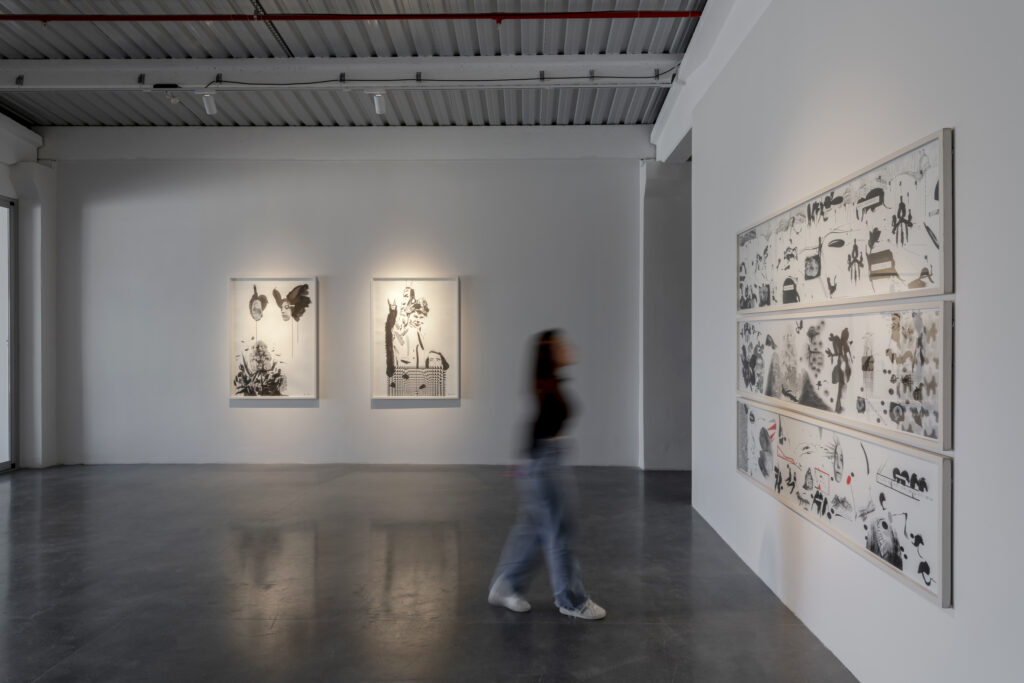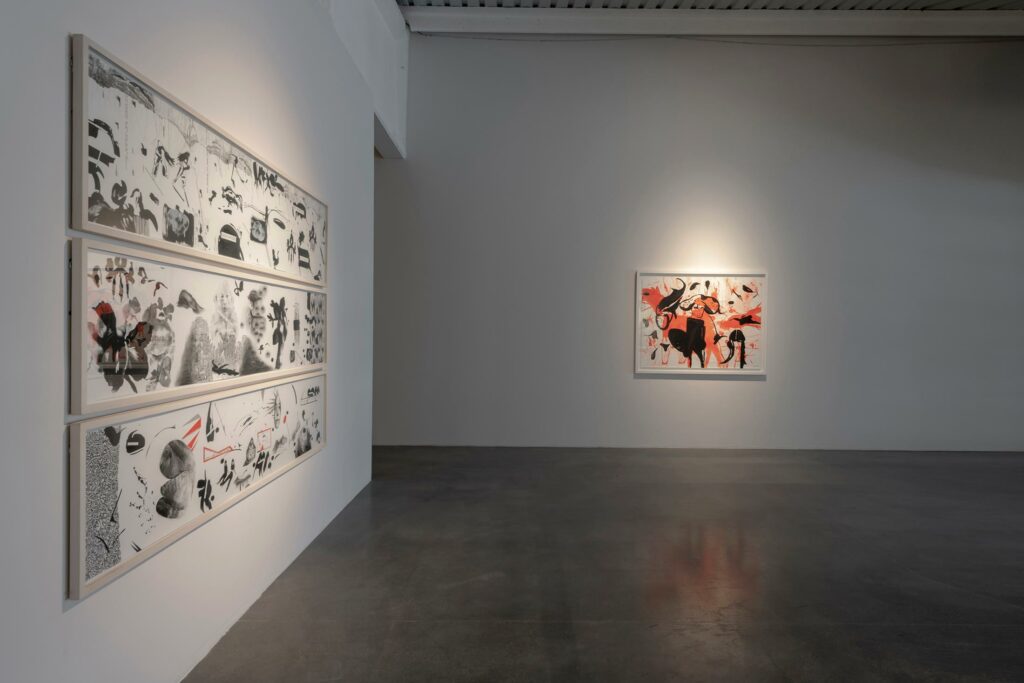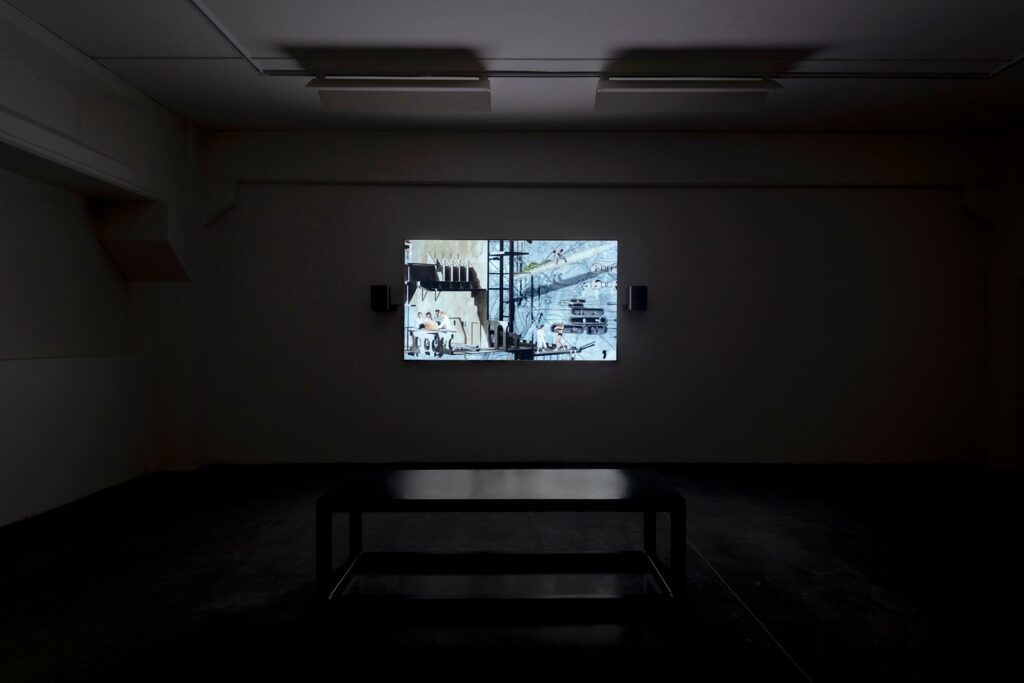“Were it not for shadows, there would be no beauty.” *
Enlightenment, true to its name, sids with light. A rational ideology seeking to render everything legibly visible illuminates everything, not leaving anything in the darkness. In reality, the more light there is, the more there is shadow, growing, sharpening its contours. A shadow complements each enlightenment. Although the mind attempts to have enlightenment dominate with an infinite effort to comprehend, the body grows in the shadows, inhabiting shadows. As the mind goes after calculations of benefits, seeking to constantly expose every joint of the body, the body derives its power from the darkness of the flesh and desires, wondering unbridled in this darkness.
İnci Eviner maps shadows in her works. This map does not represent the three dimensional universe of the modern mind. It is multi-layered and endless due to the very nature of the material it works with. It often folds back in on itself; new routes emerge from its folds; it winds. While maps as we know them try to abstract the world’s complexity to reduce it to two dimensions, Eviner returns the plurality of life to her maps. Eviner’s maps are for being lost in. Such living maps are always inhabited by bodies in motion rather than by cold signifiers. These bodies are not elements of an organism constructed from above for a divine purpose but rather parts that move according to their wills to exist. Yet the relation between bodies is permanent; they are in constant contact with each other, are often intertwined, and are often separated from each other. Every reunion and every separation is pregnant with a new birth
Every body, whether human, animal, plant or stone, is an entanglement of desire; it hosts energy. And energy means movement. İnci Eviner’s maps are for those who are always on the move. Travelers, nomads, and those who are driven by their desires. Those who do not have a place to go, who do not come from anywhere, continue the movement because they enjoy it. Sometimes a human being, sometimes an animal, a speck of dust, a crumbling rock, or the blood circulating in the veins of living things. No body is better than another. All of them gain meaning through each other.
Describing the bodies that emerge from Eviner’s videos or drawings is not easy because when you throw a ray of light on them to see them better, they instantly draw into the shadows and reveal only spectral forms. However, their true nature is hidden behind the visible, between the layers of the earth or of flesh. After all, the field of the visible is regulated by the laws of the calculating mind, so a traveler trusts not what her eye sees but what her hand touches. It gropes in the dark.
İnci Eviner does not sort nor describe the world in her maps, videos, and drawings that form the ground for them. Eviner, instead of disciplining the world, adds to its plurality, attaching modest but effective knots to the complicated network called life. Art has been a collaborator in disciplining the body by civilization, and its liberation will also be facilitated by art. It has to; art owes us that. Such an operation can only be conducted in the shadows in collaboration with those who wonder on the threshold of the visible world. Eviner’s works are charged with such a struggle for freedom.
Murat Alat
Translation by Merve Ünsal
*In Praise of Shadows, Junichiro Tanizaki
